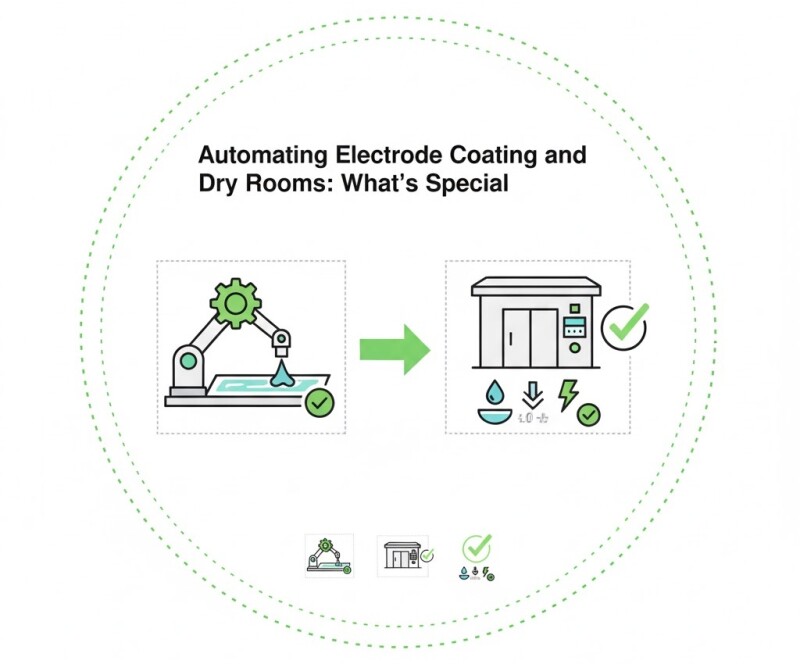Automating Electrode Coating and Dry Rooms: What’s Special
Battery electrode manufacturing is one of the most technically demanding automation challenges in industry. Precision, humidity control, and material consistency define success — and small errors can destroy yield or safety margins.
Why It’s Different from Normal Automation
Unlike general assembly, electrode coating requires micron-level film uniformity and strict environmental control. The entire process — mixing, coating, drying, and calendering — must operate inside dry rooms with dew points below –40°C.
Automation Challenges
- Static discharge risk: Sensors and robots must be ESD-protected inside low-humidity zones.
- Particulate control: Every actuator, motor, or cable must be cleanroom-rated.
- Continuous precision: Coating lines exceed 100 m/min — requiring synchronized motion and AI-driven tension control.
Case Example: Electrode Line Upgrade
A European gigafactory upgraded its coating line with vision-based edge tracking and AI control of slurry viscosity. The system reduced coating deviation by 45% and scrap by 30% within three months.
Best Practices
- Integrate AI tension control early during design.
- Use robots certified for ISO Class 6 cleanrooms.
- Continuously monitor temperature and humidity via OPC UA to MES.
Related Articles
- Traceability for Cells and Packs: Data from Day One
- Robots in Battery Assembly: Safety and Part Handling
- Quality Control for EV Batteries: From Vision to X-Ray
Conclusion
Dry rooms and electrode coating require a perfect union of precision mechanics and environmental control. Automation here is not just about speed — it’s about safety, consistency, and total process discipline.









































Interested? Submit your enquiry using the form below:
Only available for registered users. Sign In to your account or register here.